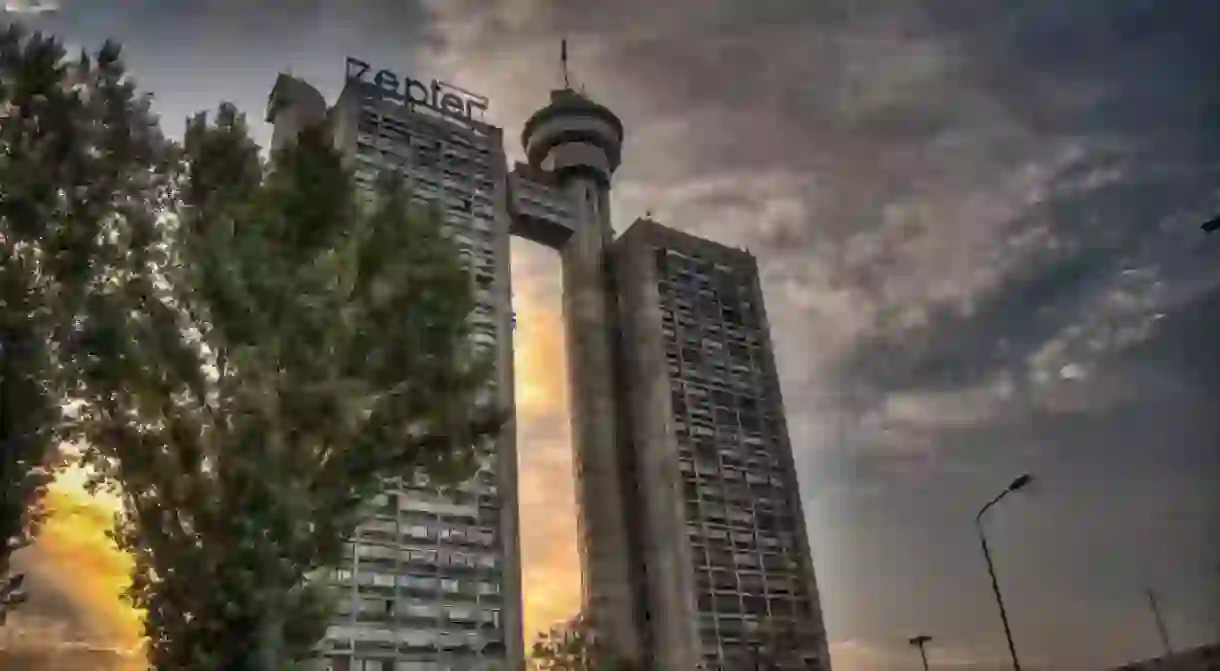Belgrade's Communist Past in 10 Places

Despite being the dominant ideology in Serbia for less than half a century, the monolithic shadow of communism still blankets Belgrade and the rest today. Tito and his socialist (well, Titoist) ways left a major architectural legacy in the capital, a collection of structures that make for an interesting peek into a nostalgic past.
Museum of Yugoslavia
What better place to learn of Serbia’s communist past than the museum dedicated to that part of the region’s history? The Museum of Yugoslavia documents the years between the end of World War II and the beginning of the wars of the early ‘90s, singing the praises of what was one of the most impressive societies in Europe.
Josip Broz Tito, ‘Mr. Yugoslav Socialism’ himself, is buried at the House of Flowers behind the museum. His mausoleum is an essential attraction when in town, whether or not you’re looking for all things communist.

Palace of Serbia
The word ‘palace’ conjures up images of elegant mansions in the countryside, which is as far away from an accurate description of the Palace of Serbia as you are going to get. A huge concrete structure in New Belgrade, the palace took 12 years to build before its completion in 1959, and still houses various sections of the Serbian government today. Shaped like a giant (an understatement) H, you’ll need to enable panorama mode in order to capture a photo of the massive building.

Sava Centar
Far and away the largest congress centre in the country, the Sava Centar is difficult to miss. Just look out for the hulking mass of concrete situated on the banks of the Sava river. Tito demanded its construction after agreeing to host a major European convention, despite not having an appropriate facility. The Centar is in a dire financial state, but still hosts events on a frequent basis.
Hotel Jugoslavija
If you’re looking for a hotel experience closer to that of the 20th century than the 21st, Hotel Jugoslaviija is the place to head. A humongous building on the side of the road heading out to Zemun, the lonely corridors and questionable facilities hark back to a very different time. Still, it was good enough for Queen Elizabeth II, Tina Turner, Neil Armstrong and many others.

Genex Tower
One of our favourite pieces of 20th century architecture in Belgrade, the Genex Tower has gone from being an embarrassing eyesore to one of the most iconic constructions in the city.
Very much a building from outer space, the Western City Gate couldn’t look more like the headquarters of a futuristic villain. The spaceship on top once housed a rotating restaurant, to add to the unusualness.

BIGZ Building
The construction of the Radisson Hotel next door pulled the plug on it as a beacon of creative life in Belgrade, but the memories remain. The BIGZ building itself also remains, although it is rather difficult to get rid of a massive brutalist construction. Once home to the largest publishing company in the Balkans, the building was taken over by musicians and artists at the turn of the century and became one of the most vibrant parts of the capital.

Dom Sindikata
Once the hottest entertainment venue in the city, Dom Sindikata’s best days are well and truly in the past. It is still a fascinating building however, a fine example of socialist realism in the capital of former socialist Yugoslavia. Miles Davis, Ella Fitzgerald and a host of other stars performed here in its heyday, but all you’ll find now is a bored security guard and a pretty fantastic jazz bar on the top floor.
Blokovi
When you think of communist architecture, the majority of images that flood into the mind are of huge concrete tower blocks. New Belgrade is full of these ‘blocks’, much-maligned plinths of concrete that have made the full transition from regrettable to appreciated in the space of two generations. The city’s largest neighbourhood is full of them, and you could easily spend a day just wandering around the beasts.

Kafana SFRJ
Given the amount of Yugoslav nostalgia in Belgrade, it is surprising there aren’t more cafes harking back to the supposed glory days. Kafana SFRJ (Cafe Socialist Federal Republic of Yugoslavia, essentially) wears its red star well and truly on its sleeve, with pictures of Tito adorning each and every wall. The drinks are cheap, the service gruff, the coffee bitter and the dream alive.
Republic Square
While not exactly a piece of communist architecture, Republic Square’s position as the heart of the city has always made it a predictable place for protest. This was the case in 1991, when huge protests against Slobodan Milošević broke out. Opposition leader Vuk Drašković famously climbed the Prince Mihailo monument to address the crowd, as the communist dream in what was still Yugoslavia edged closer to its final breath.














